Two-Rock Amplification: the tonal approach and philosophy behind the company's sought-after sound
The California amp builder has built a huge following of tone-conscious pros – co-owner Eli Lester delves into his love of high headroom and designing the Classic Reverb Signature
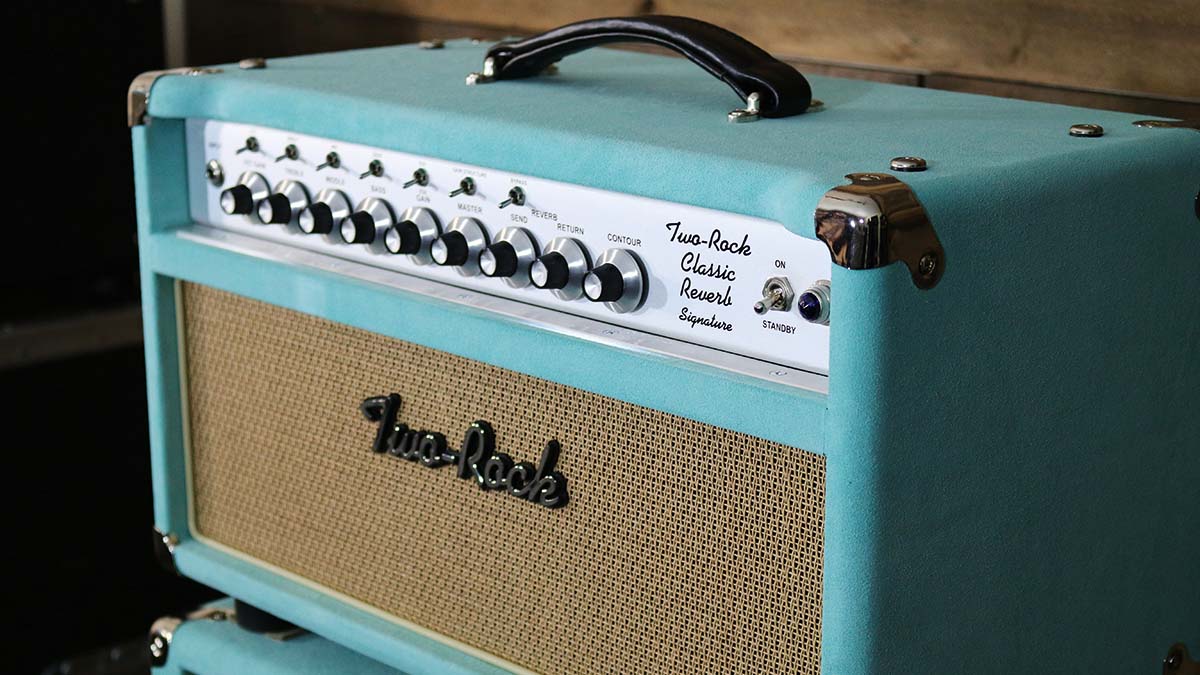
If you look closely at the backline of guitarists who take tone really seriously, you’ll often spot a Two-Rock amp. The company’s designs are rooted in the legendary Fender amps of the 50s and 60s, but evolved to the point where they have become their own unique thing.
Two-Rock is especially known for muscular, high-wattage amps that somehow also possess a lot of nuance and sensitivity to their sound. Intrigued, we caught up with Two-Rock co-owner Eli Lester about how the company has carved out a distinctive sonic niche in a crowded marketplace for boutique amps.
How are things going at Two-Rock in the midst of the current pandemic? Do people still want amps that are built for the professional stage?
“We’re very fortunate that the demand is there. It seems like more people are at home not travelling, but building rigs, just kind of playing at home, buying gear and stuff. So, ironically, we’re doing really well. And we made a very ‘command’ decision about three years ago to not grow.
“You know, I don’t ever want to be in a position that I’m not personally testing every amplifier that leaves the shop. So we are just a small shop, really, really hand-built. And, you know, we handle everything in-house, drill every eyelet by hand. We make a very high-end, artisan kind of product.”
It’s notable now many tone-conscious pros use Two-Rock, from Ariel Posen to Doyle Bramhall II. What are the key ingredients in Two-Rock’s appeal do you think?
“Obviously reliability is a huge deal for us. As much as we love all the vintage amps, it’s nice to have something reliable night after night. And it’s also a feeling – it’s how that amp feels and reacts with the way that you’re playing, much more than how it actually sounds in most instances.
Get The Pick Newsletter
All the latest guitar news, interviews, lessons, reviews, deals and more, direct to your inbox!
“And with a lot of players like Ariel and Eric Johnson and Doyle Bramhall, if they dig into the amp and it gives them something back, it inspires them to play. We’re building the amplifier for the artist, as much as we are for people to hear it.”
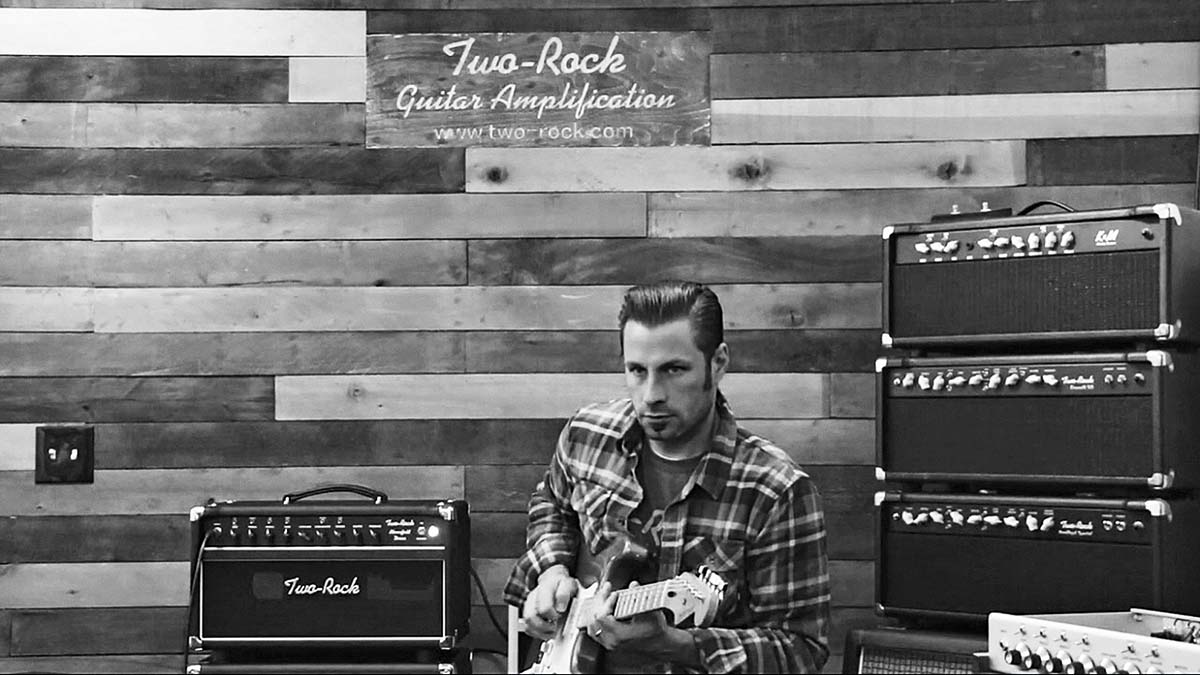
A lot of people associate Two-Rock amps with powerful but warm tone, and tons of headroom. Is that a fair assessment?
“I’ve been working with [designer] Bill Krinard for 15 or 16 years. I’ve always said I’ve owned dozens of overdrive pedals, but I don’t have any clean pedals. So I’m always looking for the fattest, most robust big headroom clean amp that we can make.
“When we took over the company about five years ago and we started building 100-watt amplifiers, the market was really going towards smaller amps. And a lot of people looked at us like we were kind of crazy.
I’m always looking for the fattest, most robust big headroom clean amp that we can make
“But that’s what I enjoy to play through: I love big headroom, that low-end snap that Stevie Ray loved… So that’s really important to us. So 95 per cent of the amps we build are 100- or 150watt platforms.
“I’m a huge vintage Fender amp collector and those are my favourite amps. And in my office when we’re play-testing and designing amps, Bill and I have vintage tweed and [black-panel] amps – ’64 Supers and ’64 Vibroverbs, and all those amps to compare ours to.
“And our amps have to have that same feel and top-end, or I would just tell people to play a vintage Fender amp, you know? So we put a lot of work into having the amps that feel right and have very usable master volumes, so they sound decent at lower volumes – so you can actually push them.”
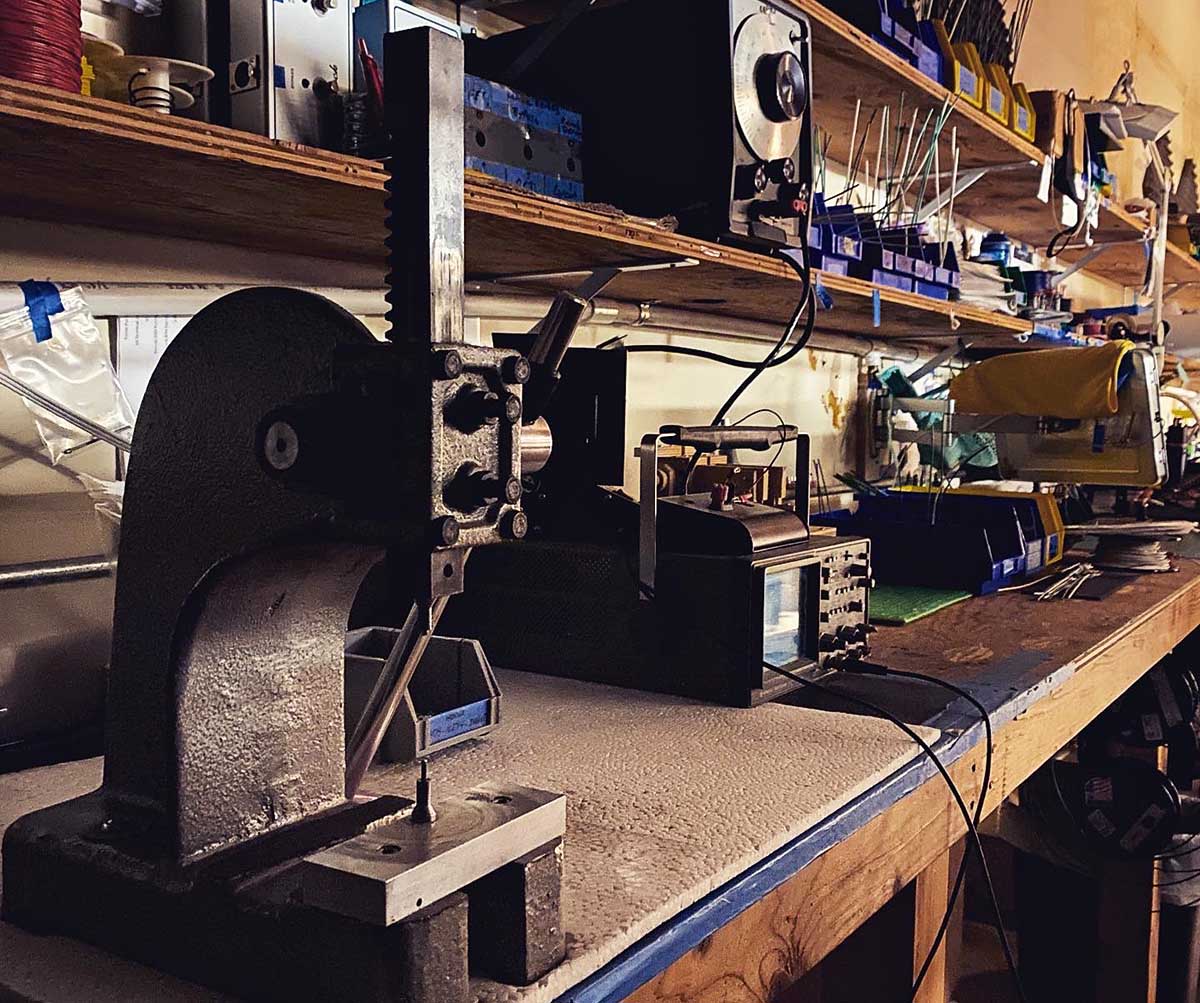
What power valves do you like designing amps around the most?
“Do you know, 6L6s and 6V6s are kind of where we live. We’ve done several EL34 and EL84 amps over the years, but 99 per cent of our product line is 6L6 based. I think it’s a very versatile power valve. It’s nice and big. It’s round. I like the way it compresses… [it] takes pedals very well.
“But all our amps you can get in a ‘4 x 6V6’ [format] where obviously the tube’s running hotter. You can get more gain out of it and really dig into the amp and push it back a little more. So we like 6V6s as well, but 6L6s are just round and shiny and it’s what we really like.”
Part of the appeal of high-end amps is the care taken in choosing every component, from transformers to speakers, for optimal performance. How does that equate to the design of Two-Rock amps?
“The transformers are a huge deal. We actually have a proprietary transformer manufactured for us – and it does do power scaling. And we made a dual primary transformer, which, when you put it in half-power mode, doesn’t change the phase or the impedance of the amplifier. Overall, it just gives more headroom and ‘shoulder’ and bounce to the amp. It’s a very beautiful transformer that we put a lot of work into.
We have a very unique front-end of the amp where it has sparkle and some character, but it also takes pedals very well, too. So you can put anything in front of it and the amp still holds together nicely
“As far as the kind of ‘chewiness’ and tone of the parts goes, we have our capacitors and resistors built for us to our own specs, mostly. So we have a very unique front-end of the amp where it has sparkle and some character, but it also takes pedals very well, too. So you can put anything in front of it and the amp still holds together nicely. We also have all the potentiometers made to our specs, so we have the right sweep on everything, the right taper.”

What amp typifies Two-Rock’s approach to design the most, would you say?
“The Classic Reverb Signature is kind of our flagship amp. It’s been around for a few years, but it definitely embodies everything Two-Rock. I like the way a vintage Fender’s top-end spikes. There’s something about turning up a Vibroluxe Reverb and playing a gig and you look at it and you go, ‘That’s pretty good.’
“Beyond that, it’s about getting the Two-Rock power supply working right, so the amp’s voice is big, it takes pedals like a champ, but also has high-end sparkle like a vintage amp would have, so the amp’s sound holds together and you can get any amount of gain tweakability out of it with just the amp and no pedals.
All our amps have a three-tube analogue reverb circuit in them. That’s another juggling act to consider; we need the reverb to sound good when you hit it with multiple pedals
“The Classic Reverb also has a three-way position switch on the front of the amp that changes it from kind of a [black-panel] vibe to a Two-Rock front-end, which is what we’re known for.
“That’s so you can have a little bit more gain, so you can push the amp to almost the point of overdrive and then just hit it with a clean boost pedal or [the] FET on the front of the amp. So we were looking to offer a lot of tweakability [in that area] to get the amount of compression or front-end gain that you’re looking for just out of the amp.”
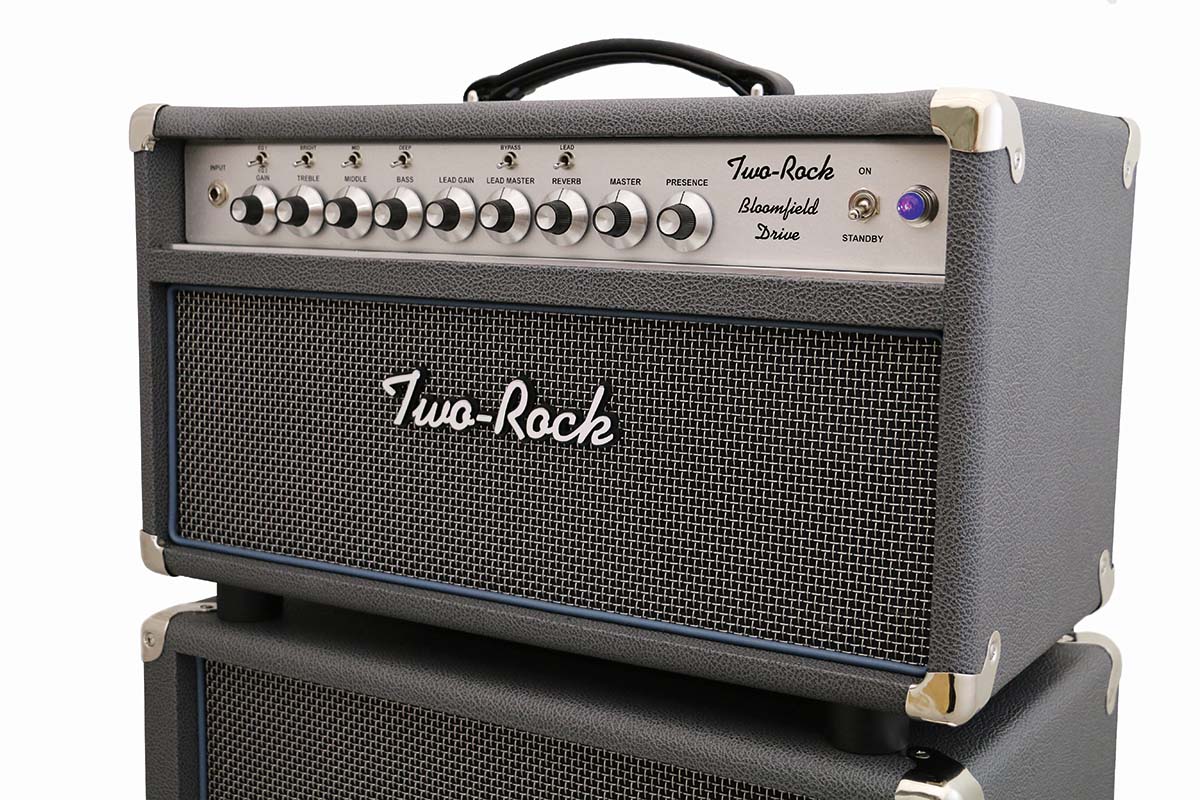
Where did you start when you were designing the Classic Reverb Signature?
“We tinkered around with circuits and front-ends until we found what’s most comfortable and what we like – not to give away too much, obviously [laughs]. Then we looked at the power supply… It had to have enough bounce to it and be comfortable to play.
“Then it was about making sure the input stage took all kinds of pedals well. I mean, we had it with every kind of Fuzz Face, because I’m a bit of a pedal junkie! So, typically, we’ll have a prototype and maybe say, ‘This is really good.’ But when I hit it with an Octavia and a Fuzz Face, for example, I might realise it needs a bit more compression on the topend.
“A lot of the design process is about tweaking and voicing the amp until we’re happy with the way that it sounds. All our amps have a three-tube analogue reverb circuit in them. That’s another juggling act to consider; we need the reverb to sound good when you hit it with multiple pedals.”
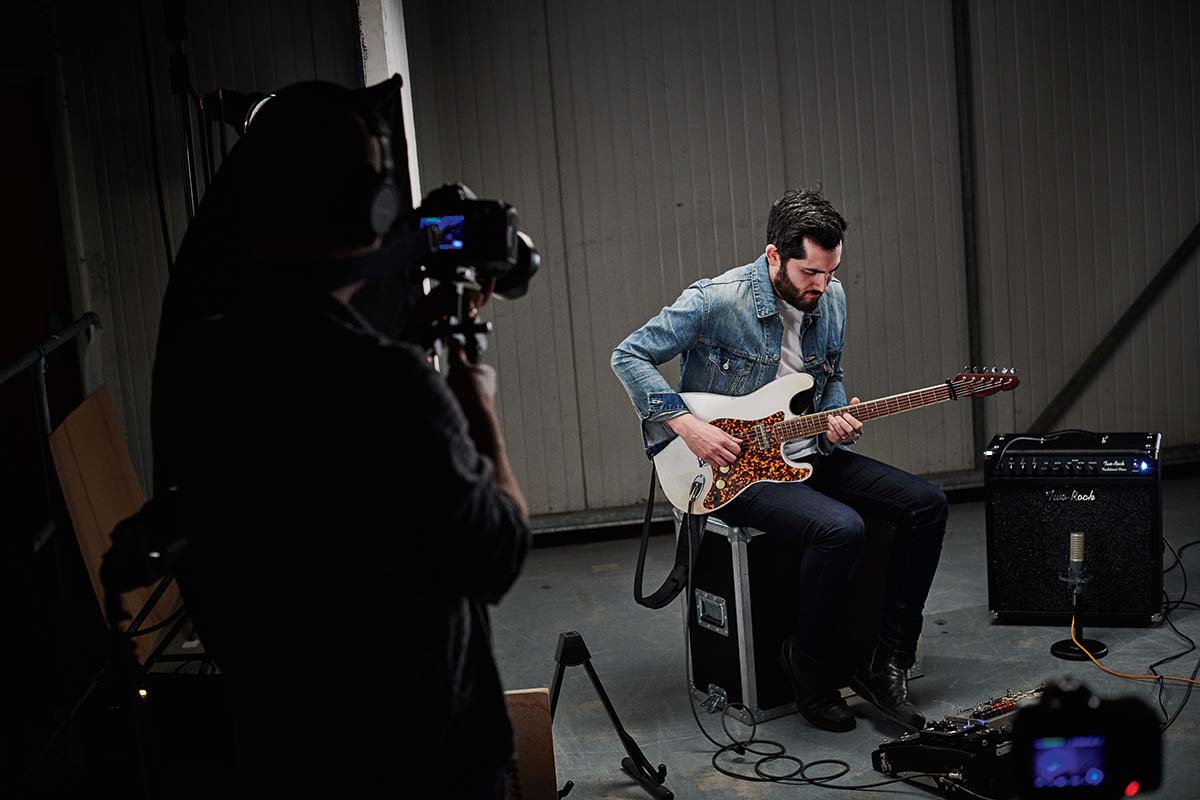
How about speakers?
“We started with the G-12 65 speaker [as the inspiration and starting point], because that’s such a neutral speaker it works with a lot of models of amps – but we upped the wattage to 100 watts, and we put a slightly thinner paper in like a Jensen P12N to give it more of a vintage sparkle, larger voice coil.
“We can use any wattage amp with that speaker. I actually don’t think people play around with speakers and cabinets enough. A lot of times you get more tonal variation by switching speakers and cabinets than you do by changing amp heads.
I might sit there and spend two, three, four weeks just working on one capacitor so I can find which one I want to use in a particular area of the amp we’re working on
“I literally have eight 2x12 cabinets in my office with different speakers in all of them and all of them are [routed through] a switcher. I spent hours playing with different speaker combinations, trying to find the right thing – trying different baffle thicknesses on our cabinets, that kind of thing.
“Likewise with the electronic components, I might sit there and spend two, three, four weeks just working on one capacitor so I can find which one I want to use in a particular area of the amp we’re working on.
“We had a model come out recently and we’d got it all voiced, got the first 10 built and put in boxes ready to go out the door. But I went home and started playing with a couple more caps and said, ‘You know what, I like this one better.’ So then the guys had to pull those amps out of the boxes again and swap those parts out. So we’re always tweaking. We’re geeks!”
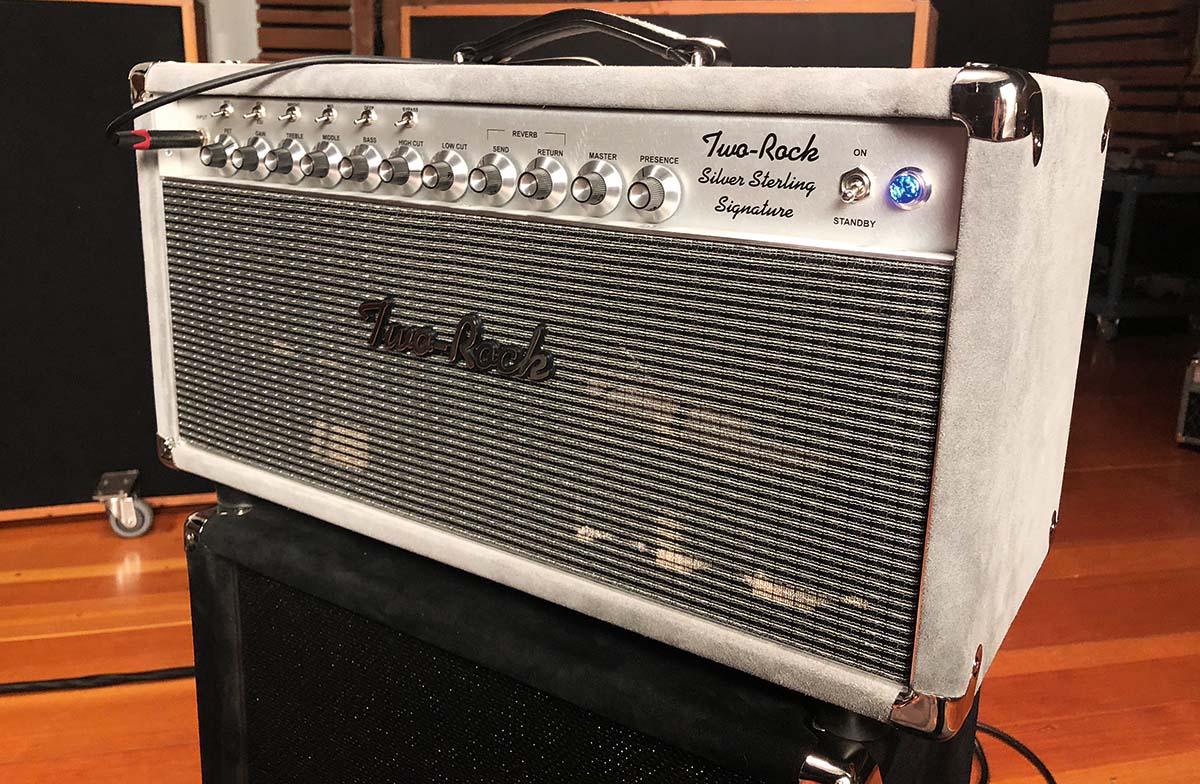
Is there anything about making hand-built boutique amps that you feel people tend to misunderstand?
“We really just put the best parts in there we can. We don’t even look at the price of anything, we just put the best stuff in there and then price the amp afterwards. And, you know, I’m playing every amp and voicing them before they leave – Mac Skinner, who’s my partner and co-owner, looks at all the aspects of production.
“And it’s not uncommon to get two amplifiers off the line that may have slightly different components in them. And it’s funny because on some of the forums, people will go, ‘Oh, this is crazy – they’re using, say, a silver mica cap here and why do they have this particular component on this Classic Reverb Signature but this other one has a different component?’ Well, sometimes you just have to change the recipe a little bit for that particular amp. It’s not the same every single time.
It’s not uncommon to get two amplifiers off the line that may have slightly different components in them... Sometimes you just have to change the recipe a little bit for that particular amp. It’s not the same every single time
“We could have two amps next to each other and one would have this value cap and the other one that value, because that’s how they needed to be to get them to sound the way we need them to. And it’s funny because, like I said, sometimes people on the forums go, ‘Whoa, I have two amps right next to each other and they have different parts in them…’ Well, it’s because one of those amps may have needed more top-end for some reason.
“Some amps are dead perfect and all they need is a little bit of tweaking with some internal trim pots. Other ones I may spend two or three hours playing around with power supply and other things to get them where I feel they need to be.”
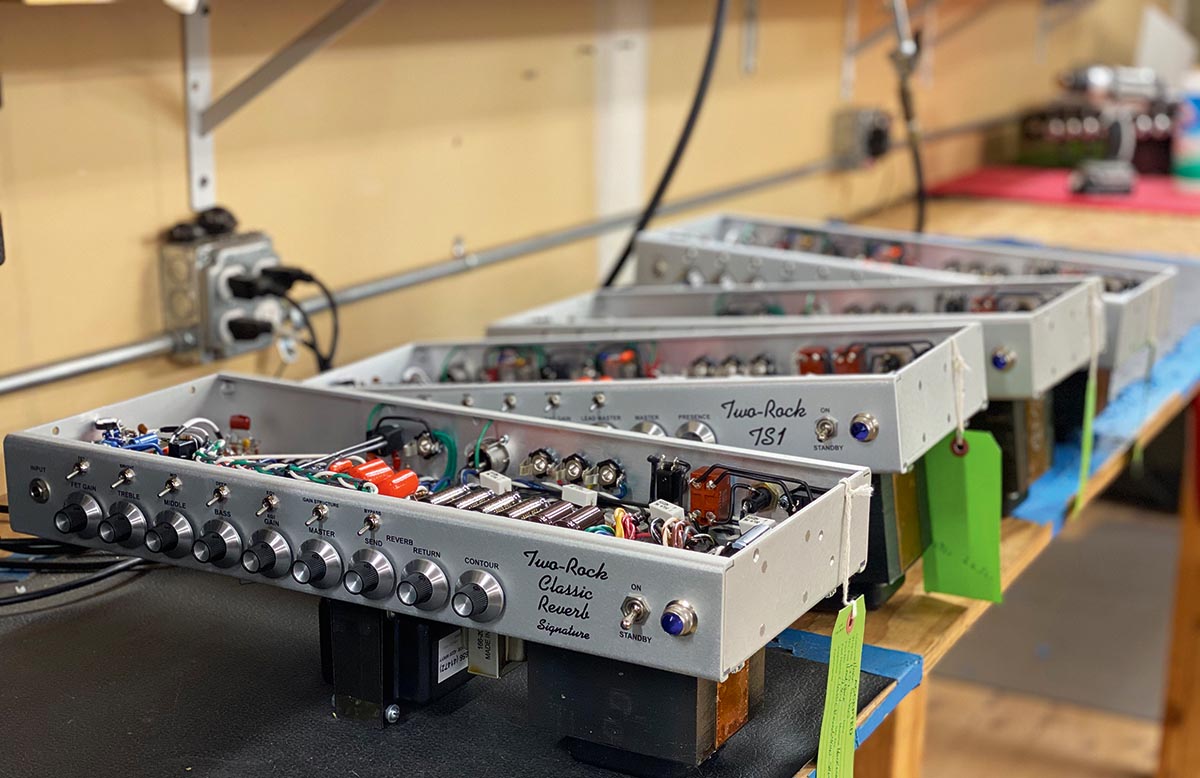
You do make lower-wattage amps, such as the 28-watt tweed-influenced Burnside. What are the contrasting challenges of building a good lower-output amp versus building a big amp?
“I love vintage tweeds and things like little 20-watt modified Filmosound projector amps that I gig with and love. With low-wattage amps it’s hard to get them so [the voice and feel] is not so immediate, so quick, and so the master volume actually does something.
With a lot of lower-wattage amps, once you get that control past 11, 12 o’clock, the amp’s not adding anything [extra, tonally], it’s just piling on more gain. It’s not really helping anything. So getting the input stage of a low-wattage amp to where you can get some different tones out of it is hard.
“With high-wattage amps there are other variables. You’re trying to get the biggest tone you can, but also trying to get lots more components working right together. Generally, larger-wattage amps have a lot more things going on than lower-wattage amps. Generally speaking, the more stuff you put on the amp, the more it can [detract] from tone if you’re not careful, so it is a juggling act.”
Option-rich amps can have an important role in helping players optimise their sound to suit different guitars and effects, though…
“Absolutely. I mean, we have an EQ1/EQ2 switch on the front of our amplifiers and EQ1 is really voiced for if you’re playing with humbuckers, while EQ2 has quite a bit more gain and mids to it – and that’s the voice for single-coil guitars.
One of our big goals is making amps so you can actually hear the guitar.
“So if you have a single-coil guitar you can have it on the EQ2 setting, but if you then grab a humbucker guitar, you can just flip it up and the gain structure kind of lines up to work optimally for humbuckers.
“One of our big goals is making amps so you can actually hear the guitar. We want to be able to hear if it’s a maple ’board or a rosewood ’board or if it’s Les Paul or an SG. We want to hear fingers and fretboard more than the amplifier.”
Jamie Dickson is Editor-in-Chief of Guitarist magazine, Britain's best-selling and longest-running monthly for guitar players. He started his career at the Daily Telegraph in London, where his first assignment was interviewing blue-eyed soul legend Robert Palmer, going on to become a full-time author on music, writing for benchmark references such as 1001 Albums You Must Hear Before You Die and Dorling Kindersley's How To Play Guitar Step By Step. He joined Guitarist in 2011 and since then it has been his privilege to interview everyone from B.B. King to St. Vincent for Guitarist's readers, while sharing insights into scores of historic guitars, from Rory Gallagher's '61 Strat to the first Martin D-28 ever made.









![John Mayer and Bob Weir [left] of Dead & Company photographed against a grey background. Mayer wears a blue overshirt and has his signature Silver Sky on his shoulder. Weir wears grey and a bolo tie.](https://cdn.mos.cms.futurecdn.net/C6niSAybzVCHoYcpJ8ZZgE.jpg)

![A black-and-white action shot of Sergeant Thunderhoof perform live: [from left] Mark Sayer, Dan Flitcroft, Jim Camp and Josh Gallop](https://cdn.mos.cms.futurecdn.net/am3UhJbsxAE239XRRZ8zC8.jpg)
